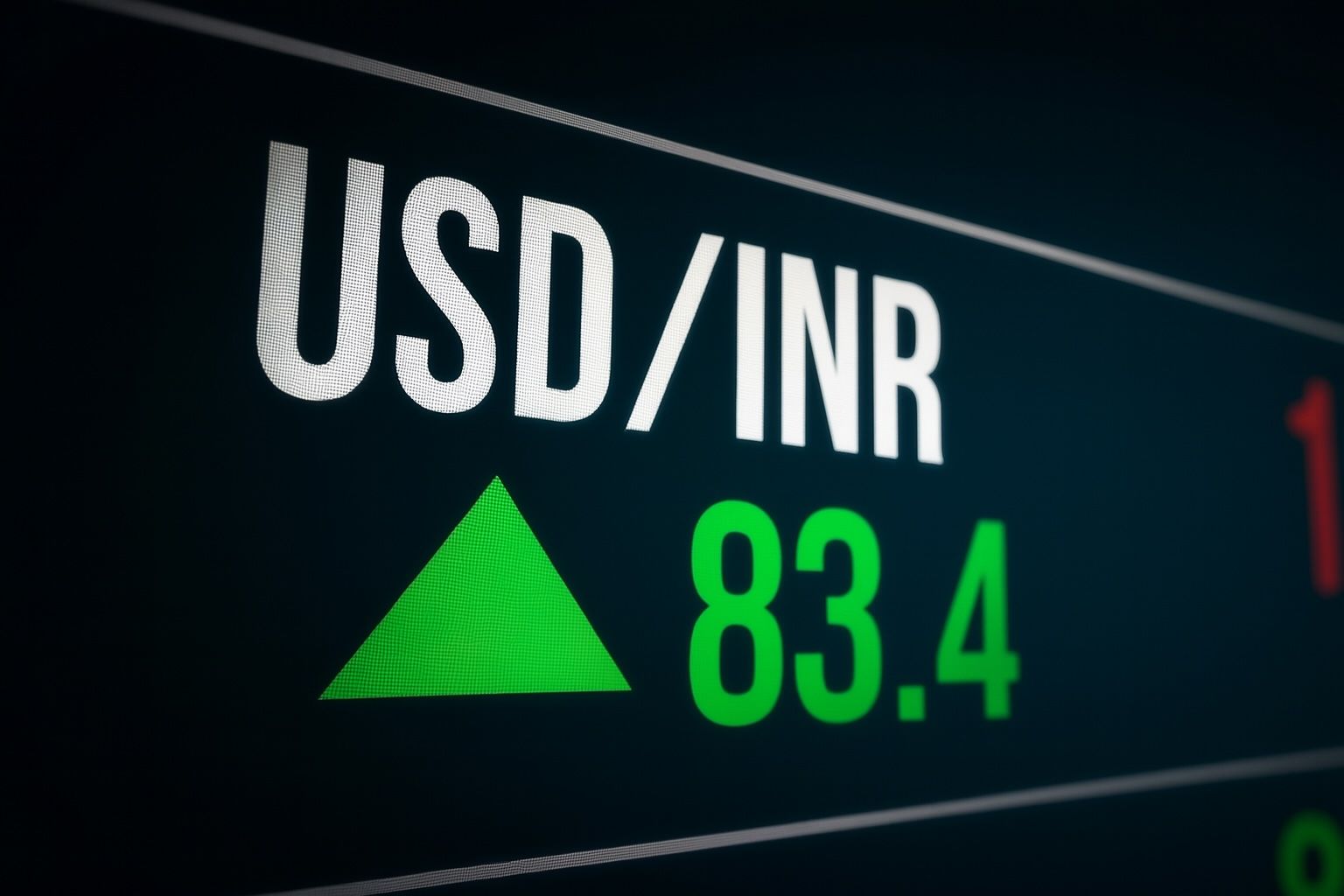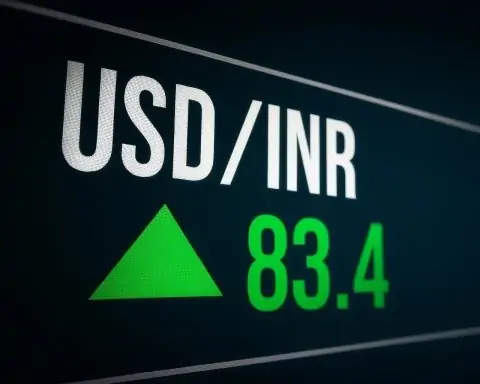The Indian rupee is trading barely off its all‑time lows against the US dollar today, Saturday, 22 November 2025, with most data providers showing USD/INR around the ₹89.5–₹89.7 zone. That keeps the currency parked near the record levels it hit on Friday as global risk aversion, US–India trade tensions and sustained foreign outflows continue to weigh on sentiment. [1]
According to retail and institutional trackers, one US dollar buys roughly ₹89.6 today: dollarrupee.in quotes ₹89.6120 per dollar, unchanged from Friday’s close, while some forex platforms and bank-rate aggregators put intraday levels closer to ₹89.64–₹89.65. [2] For context, Wise’s six‑month history shows today’s high near ₹89.64 as the strongest the dollar has been against the rupee in at least half a year, compared with lows around ₹85.10 at the end of May. [3]
Put simply: USD/INR today is trading in record‑weak territory for the rupee, and the story is as much about domestic flows and trade policy as it is about the global dollar cycle.
USD to INR Today: Key Levels and How We Got Here
- Spot zone (interbank): Roughly ₹89.5–₹89.7 per dollar, depending on the data source and timing. [4]
- Friday’s close: Major market trackers show the rupee finishing Friday near ₹89.4–₹89.5, after briefly testing the mid‑₹89.5–₹89.6 area. [5]
- Fresh records: Reuters and domestic financial media confirm Friday’s move pushed the rupee beyond its previous all‑time low near ₹88.80, set in late September and revisited earlier this month. [6]
- Performance this year: The rupee is now down about 4.5% year‑to‑date, making it one of the weakest major Asian currencies in 2025. [7]
Different outlets quote slightly different closing prints – NDTV Profit highlights a finish near ₹89.41 with an intraday trough around ₹89.48, Business Standard cites a close at ₹89.49 after an intraday low of roughly ₹89.54, while PTI copy carried by Outlook Business references a close at ₹89.66. [8] The discrepancies mainly reflect vendor data, cut‑off times and whether they reference the official interbank close or late‑day deals, but the message is the same: USD/INR has broken decisively into uncharted territory above 89.
On a six‑month view, Wise’s historical series shows USD/INR rising from an early‑May trough around ₹85.10 to today’s high near ₹89.64 – a depreciation of a little over 5% in roughly half a year. [9] In practical terms, compared with May, Indians now need about ₹4,500 more for every $1,000 they exchange at interbank-equivalent rates (before bank spreads and card mark‑ups).
Friday’s Crash: The Move That Broke the 89 Barrier
The backdrop to today’s rate is Friday’s dramatic slide.
- Record intraday and closing lows:
Reuters reports the rupee slumped to around ₹89.49 per dollar on Friday, breaching its previous record near ₹88.80 and logging its sharpest one‑day fall since May. [10] NDTV Profit and Business Standard detail a fall of roughly 70–80 paise on the day, with the currency weakening from around ₹88.7 at the open to the high‑₹89.4s by the close. [11] - Biggest intraday jolt in months:
Market coverage describes Friday as the worst intraday decline since early May, when the rupee last saw a comparable single‑session loss. [12] - RBI steps back from its line in the sand:
Traders quoted by Reuters say the Reserve Bank of India (RBI) had been actively defending the 88.80 zone for weeks but appeared to pull back on Friday, only re‑emerging closer to ₹89.50 to smooth the move rather than cap it. [13] With that, analysts at ANZ now see ₹89.50 as the new near‑term resistance on USD/INR. [14] - “Demand‑driven” move, not classic global shock:
A detailed PTI report carried by Outlook Business notes that the rupee’s plunge came even as the dollar index was only slightly higher and Brent crude had actually fallen, underscoring that the move was driven primarily by domestic dollar demand overwhelming supply, rather than a classic external shock. [15]
Add it up and you get what many traders described as a stop‑loss cascade: once the RBI stopped drawing a hard line at 88.80 and USD/INR pushed through the psychological 89 handle, layers of hedging orders and speculative positions were forced to adjust, amplifying the late‑afternoon sell‑off. [16]
What’s Driving USD/INR Today?
1. US–India Trade Tensions and Tariffs
The rupee’s latest bout of weakness cannot be understood without the new US tariff regime on Indian exports.
- Steep “reciprocal” tariffs imposed by Washington in late August have begun to bite into India’s export engine, with official data showing merchandise exports falling in October for the first time this year. [17]
- NDTV Profit reports that exports to the US – still India’s top market – have declined in recent months, with sectors such as textiles, gems and jewellery, shrimp and leather goods bearing the brunt of higher tariffs and losing orders to rivals in Vietnam, Bangladesh and Mexico. [18]
- Reuters notes that the tariff shock has pushed India’s merchandise trade deficit to a record high, with exports to the US down about 9% year‑on‑year. [19]
All of this matters for USD/INR because a wider trade deficit and softer export flows increase India’s structural demand for dollars, at exactly the moment when global investors are more cautious about emerging markets.
2. Foreign Outflows and BoP Worries
The rupee’s slide is also a balance‑of‑payments story.
- Foreign investors have withdrawn about $16.5 billion from Indian equities so far this year, making India one of the hardest-hit markets globally in terms of portfolio outflows, according to Reuters. [20]
- Citi economists quoted in the same report now expect India to record a $5 billion balance‑of‑payments deficit in FY26, which would mark the second consecutive BoP deficit – something not seen since at least 1991. [21]
That combination of trade headwinds + portfolio outflows means India is, at least temporarily, sending out more dollars than it brings in – a backdrop that naturally pushes USD/INR higher unless offset by stronger FDI, remittances or central‑bank intervention.
3. Global Risk-Off: AI Jitters, Crypto Crash and a Firm Dollar
The rupee’s latest weakness comes against a decidedly uneasy global backdrop:
- Tech and AI stocks wobble: After blockbuster earnings from Nvidia briefly revived risk appetite, concerns about a possible AI‑driven valuation bubble resurfaced, pulling major US indices lower and sparking a broader risk‑off move. [22]
- Bitcoin and crypto tumble: Bitcoin has dropped into the low‑$80,000 range, its lowest level in about seven months, with Times of India estimating roughly $1.2 trillion wiped out from crypto markets over six weeks. [23] Analysts frame the crash as part of a broader retreat from speculative assets, spilling over from tech into digital currencies and then into emerging‑market assets more generally.
- Hawkish Fed and a supported dollar: A run of firm US data has pushed markets to trim expectations for near‑term Fed rate cuts, keeping US yields elevated and the dollar index near multi‑month highs, according to commentary from State Street and Reuters. [24]
In this environment, global investors have been reducing risk across the board, and currencies like the rupee – already under idiosyncratic pressure from trade frictions – tend to feel the impact more intensely.
4. RBI’s Stance: “We Do Not Target Any Level of Rupee”
RBI Governor Sanjay Malhotra has been at pains this week to stress that the central bank does not target a specific rupee level and that the recent depreciation is largely a function of strong demand for US dollars amid trade uncertainty. [25]
Key points from his recent remarks and market reactions:
- The RBI says FX reserves remain ample, and there is no fundamental concern about the external position, echoing reassurances carried by both Outlook Business and Business Standard. [26]
- Officials and strategists agree the central bank is willing to intervene to smooth volatility and prevent “disorderly” moves, but is less inclined to hold any hard line (such as 88.80) indefinitely in the face of genuine flow pressure. [27]
- Market strategists quoted by NDTV Profit and Reuters suggest the RBI is now more comfortable with USD/INR trading closer to the 89–90 band, intervening mainly when moves become abrupt rather than when specific levels are touched. [28]
That shift helps explain why the rupee is still hovering near record lows today: the RBI is managing the pace of depreciation, not trying to fully reverse it.
What the Latest Forecasts Say About USD to INR
Brokerage research and strategy notes published in November give a sense of how the professional market is thinking about the rupee from here.
Jefferies: Rupee Around 90 Over the Next 12 Months
In an India strategy note earlier this month, Jefferies argued that “the worst is over” for the rupee, even as it remains the worst performer among major economies this year. The brokerage expects the currency to trade around 90 per US dollar on average over the next 12 months – not far from today’s levels. [29]
Their relatively calm view rests on several structural positives:
- Very low current account deficit: Jefferies estimates CAD at just 0.5–0.6% of GDP over the next two fiscal years – among the best readings in two decades – thanks to muted oil prices and strong services exports. [30]
- Reduced oil intensity: India’s oil consumption per trillion dollars of GDP has fallen sharply over the years, making the economy structurally less sensitive to oil spikes than in past rupee crises. [31]
- Lower gold and silver imports: Despite a surge in global gold prices, India’s combined gold and silver imports fell about 4% year‑on‑year in April–September, hinting at a shift in household savings patterns. [32]
- Potential upside from a US trade deal: Jefferies argues that a clear trade pact with the US could spark renewed portfolio inflows and give the rupee some room to claw back recent losses. [33]
In short, their base case is not a prolonged free‑fall in the rupee, but rather a period of range‑bound, choppy trading around current levels, with trade headlines and global risk appetite determining whether the next 2–3 rupees are up or down.
Citi and Others: Trade Deal Is Critical
Citi’s economists, cited by Reuters, are more focused on the risks of two back‑to‑back BoP deficits and warn that a timely, favourable trade deal with the US is crucial to stabilising export orders and currency sentiment. [34]
Their takeaway is aligned with what many traders are watching: each headline about US–India trade talks has the potential to move USD/INR quickly, either by easing fears of prolonged tariffs or by confirming that the current regime will be in place for longer.
What Today’s USD/INR Level Means for You
Note: The following is general information, not personal investment advice. Always consider your own situation and, if needed, speak to a qualified adviser.
1. Import‑Heavy Businesses
Companies that import crude, electronics, machinery or other dollar‑priced inputs face immediate cost pressure when USD/INR sits near record highs:
- A move from 85 to roughly 89.6 means about 5% higher rupee costs for the same dollar invoice compared with late May. [35]
- Firms without hedges may see margin compression unless they can pass costs on to customers.
- Some CFOs may respond by stepping up forward‑cover or looking at natural hedges (such as matching dollar imports with dollar revenues where possible).
2. Exporters and IT/Services
For exporters and IT/ITES companies that earn in dollars but pay most costs in rupees, the weak INR is a double‑edged sword:
- On the one hand, every dollar of revenue converts into more rupees, supporting reported sales and profit figures.
- On the other, many exporters to the US are simultaneously grappling with softer demand and higher tariffs, which limit how much they can benefit from the currency tailwind. [36]
Net effect: for sectors less exposed to US tariffs (such as many IT services), the current USD/INR zone is supportive. For labour‑intensive manufacturing exporters, the picture is more mixed.
3. Students, Travellers and Online Shoppers
For Indians paying foreign university fees, travel bills, or online subscriptions in dollars, today’s level is painful:
- Compared with an 85‑handle earlier this year, a $10,000 tuition payment now demands roughly ₹45,000 more in rupee terms before card and bank charges.
- Many banks and card providers also add 2–4% mark‑ups over the interbank rate, so the effective “retail” USD to INR rate you see on your statement may be above the headline ₹89.6 zone.
Planning ahead – for example by staggering conversions instead of doing everything on one day, or comparing bank vs. fintech vs. remittance provider rates – can help smooth the impact, even if it can’t fully offset the weaker rupee.
4. NRIs and Remitters
On the flip side, NRIs and overseas workers sending money home see a temporary boost:
- A $1,000 remittance that would have converted to about ₹85,000 at May’s lows now converts closer to ₹89,500 at interbank levels, roughly ₹4,500 more before fees. [37]
Again, actual take‑home depends on the spread charged by banks or remittance apps, but the directional benefit is clear.
What to Watch Next for USD to INR
Looking beyond today’s spot rate, three big themes will likely steer USD/INR in the near term:
- US–India Trade Negotiations
- Any credible roadmap towards easing or re‑calibrating US tariffs on Indian exports would be positive for the rupee by improving both trade flows and investor sentiment.
- Conversely, signs that the current tariff regime will persist into 2026 without relief could keep USD/INR biased upwards. [38]
- Global Risk Appetite and the Tech/Crypto Shake‑Out
- If the AI and crypto sell‑off stabilises, global risk appetite could recover, easing pressure on emerging‑market currencies. [39]
- A deeper, prolonged slide in high‑growth tech and digital assets, however, would likely fuel more de‑riskingand keep the rupee on the defensive.
- Fed Messaging and Dollar Strength
- The longer markets believe US rates will stay higher for longer, the more support the dollar index is likely to get, all else equal. [40]
- Any dovish surprises – whether from weaker US data or explicit Fed guidance – could cap the dollar and give some breathing room to USD/INR, especially if local factors (tariffs, flows) also improve.
Bottom Line
- Today, 22 November 2025, USD/INR is trading around ₹89.6, leaving the rupee hovering within a whisker of its lifetime lows. [41]
- The move is being driven by a powerful mix of domestic and global forces: US tariffs and a record trade deficit, heavy portfolio outflows, risk‑off sentiment tied to tech and crypto weakness, and an RBI that is smoothing rather than fully resisting depreciation. [42]
- Strategists are increasingly treating the 89–90 band as the new centre of gravity for USD/INR in the short term, with the next leg depending heavily on how trade talks and global markets evolve. [43]
For now, anyone with USD exposures – whether as a business, traveller, student or remitter – is operating in a new, higher‑USD reality. The rupee’s structural fundamentals still look stronger than in past crises, but until trade tensions ease and risk appetite returns, USD/INR is likely to remain a headline story rather than a quiet background metric.
References
1. www.reuters.com, 2. dollarrupee.in, 3. wise.com, 4. dollarrupee.in, 5. www.reuters.com, 6. www.reuters.com, 7. www.reuters.com, 8. www.ndtvprofit.com, 9. wise.com, 10. www.reuters.com, 11. www.ndtvprofit.com, 12. www.ndtvprofit.com, 13. www.reuters.com, 14. www.reuters.com, 15. www.outlookbusiness.com, 16. www.reuters.com, 17. www.ndtvprofit.com, 18. www.ndtvprofit.com, 19. www.reuters.com, 20. www.reuters.com, 21. www.reuters.com, 22. www.businessinsider.com, 23. timesofindia.indiatimes.com, 24. www.ssga.com, 25. www.outlookbusiness.com, 26. www.outlookbusiness.com, 27. www.reuters.com, 28. www.ndtvprofit.com, 29. www.ndtvprofit.com, 30. www.ndtvprofit.com, 31. www.ndtvprofit.com, 32. www.ndtvprofit.com, 33. www.ndtvprofit.com, 34. www.reuters.com, 35. wise.com, 36. www.ndtvprofit.com, 37. wise.com, 38. www.reuters.com, 39. timesofindia.indiatimes.com, 40. www.ssga.com, 41. dollarrupee.in, 42. www.reuters.com, 43. www.reuters.com










